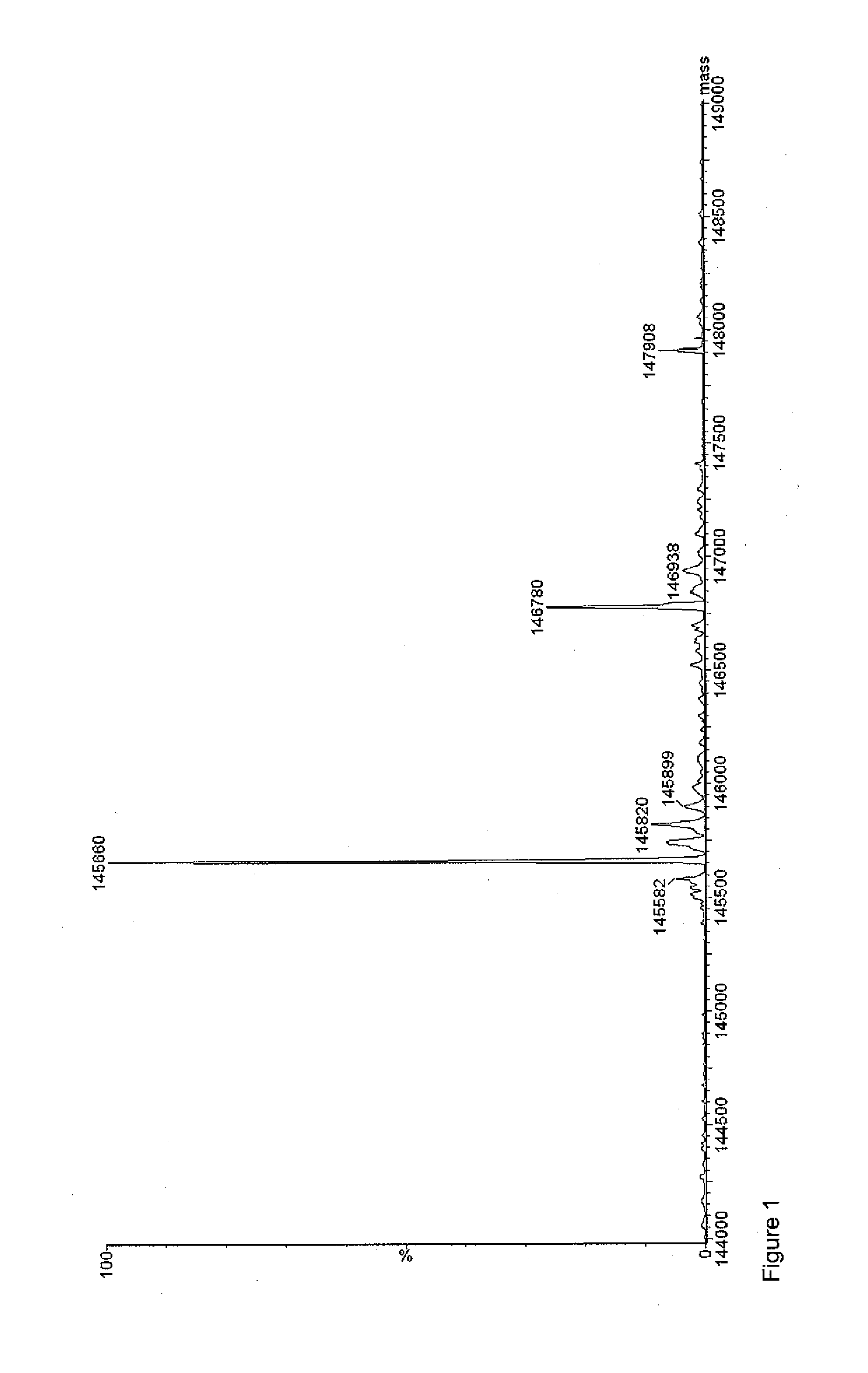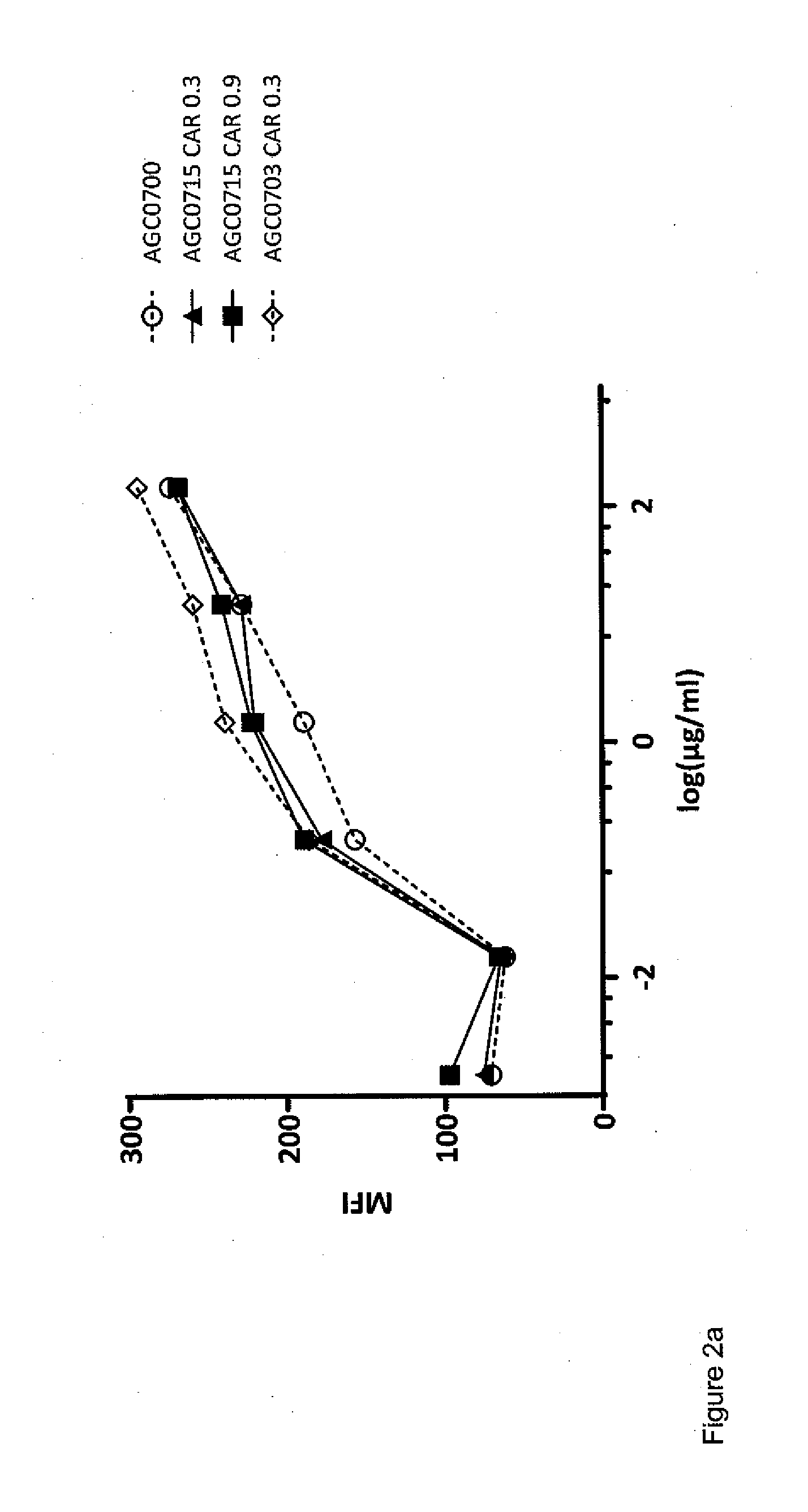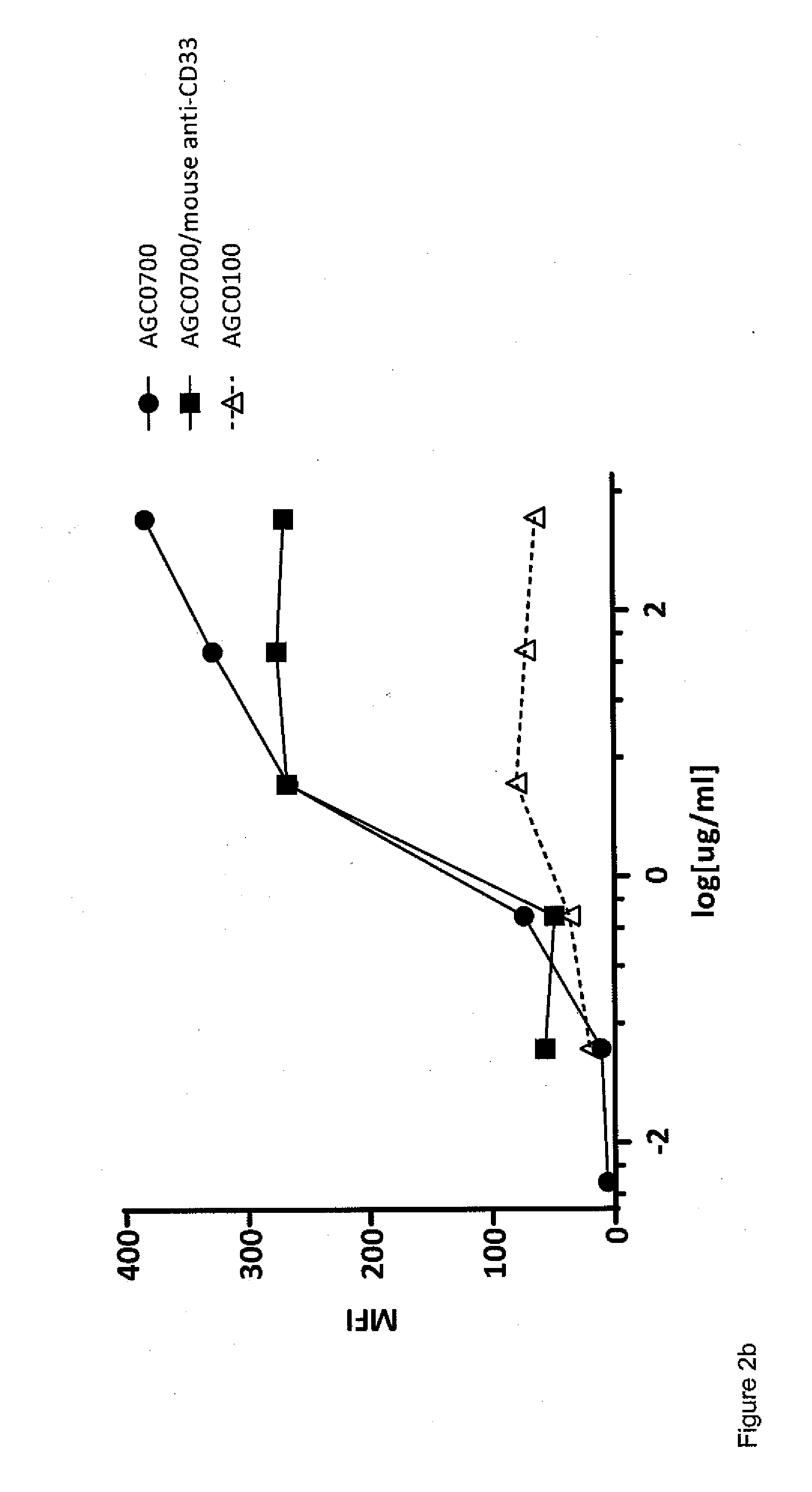Radio-pharmaceutical complexes
a radiopharmaceutical and complex technology, applied in the field of complexes of thorium isotopes, can solve the problems of unsatisfactory liposome administration, undesired systemic toxicity, and difficulty in commercial production and distribution of radiopharmaceuticals based on these radionuclides
- Summary
- Abstract
- Description
- Claims
- Application Information
AI Technical Summary
Benefits of technology
Problems solved by technology
Method used
Image
Examples
example 1
Isolation of Pure Thorium-227
[0136]Thorium-227 is isolated from an actinium-227 cow. Actinium-227 was produced through thermal neutron irradiation of Radium-226 followed by the decay of Radium-227 (t½=42.2 m) to Actinium-227. Thorium-227 was selectively retained from an Actinium-227 decay mixture in 8 M HNO3 solution by anion exchange chromatography. A column of 2 mm internal diameter,
[0137]length 30 mm, containing 70 mg of AG®1-X8 resin (200-400 mesh, nitrate form) was used. After Actinium-227, Radium-223 and daughters had eluted from the column, Thorium-227 was extracted from the column with 12 M HCl. The eluate containing
[0138]Thorium-227 was evaporated to dryness and the residue resuspended in 0.01 M HCl.
example 2
Synthesis of Compound IX
Step 1
[0139]
[0140]2-benzyloxyethylamine (31 g, 207 mmol) and glycolonitrile (16 mL, 70% solution in water, 207 mmol) was dissolved in 300 mL EtOH (abs) and refluxed for 4 h. The volatiles were removed under reduced pressure. The crude product (24.7 g, 130 mmol) was carried on to the next step without further purification.
[0141]1H-NMR (CDCl3, 400 MHz): 2.92 (m, 2H), 3.58-3.62 (m, 4H), 4.51 (s, 2H), 7.25-7.37 (m, 5H)
Step 2
[0142]
[0143]1 (24.7 g, 130 mmol) was dissolved in dry ether. HCl (g) was bubbled through the solution for 30 minutes. The precipitate was filtered off and dried under reduced pressure, giving the desired product (27.8 g, 122.6 mmol. The product was carried on to the next step without further purification or analysis.
Step 3
[0144]
[0145]2 (27.8 g, 122.6 mmol) was dissolved in 230 mL chlorobenzene at room temperature. Oxallyl chloride (45 mL, 530 mmol) dissolved in 100 mL chlorobenzene was added drop wise over 30 minutes at room temperature. The r...
example 3
Conjugation
[0173]Filtered trastuzumab in 1.0 mL 0.9% NaCl solution (9.5 mg / mL), and novel chelator (formula IX) in 5-35 μL metal free water (10 mg / mL) were added to 1.0 mL sterile filtered borax buffer (70 mM, pH 9). The reaction mixture was stirred gently at 37° C. over night, and the resulting conjugate was purified and concentrated in 0.9% NaCl solution using an Amicon Ultra-4 (30 k MWCO) centrifugal filter unit. Successful conjugation was confirmed by LC / MS analysis.
PUM
| Property | Measurement | Unit |
|---|---|---|
| diameters | aaaaa | aaaaa |
| energy | aaaaa | aaaaa |
| mass | aaaaa | aaaaa |
Abstract
Description
Claims
Application Information
 Login to View More
Login to View More - R&D
- Intellectual Property
- Life Sciences
- Materials
- Tech Scout
- Unparalleled Data Quality
- Higher Quality Content
- 60% Fewer Hallucinations
Browse by: Latest US Patents, China's latest patents, Technical Efficacy Thesaurus, Application Domain, Technology Topic, Popular Technical Reports.
© 2025 PatSnap. All rights reserved.Legal|Privacy policy|Modern Slavery Act Transparency Statement|Sitemap|About US| Contact US: help@patsnap.com



